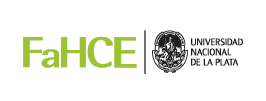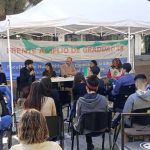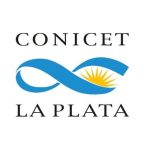Director/a: Carut, Claudia Beatriz
Co-director/a: Crivos, Marta Alicia
Integrantes:
Arbide, Dardo
-
Botana, María Inés
-
Pérez Ballari, Andrea
-
Stubbs, Edgardo
Becarios/Tesistas: D’Amico, Gabriela - Mirallas, Mariana Belén
Colaboradores/as: Aguirre Pacheco, Vanesa Soledad - Ghetti, Georgina Tatiana - Juárez, Luis Alejandro - Roig, Mariela Lorena - Spina, Noelia Belén - Toledo, Ricardo Martin
Proyecto de Investigación y Desarrollo (PI+D) financiado por: Universidad Nacional de La Plata (UNLP)
Código: H886 - Fecha de inicio: 01/01/2019 - Fecha de finalización: 31/12/2023
Lugar de trabajo: CIG
ResumenPartiendo de un enfoque transdiciplinar como herramienta de abordaje de los estudios portuarios, se entiende la construcción del espacio portuario como un proceso continuo, en el que cada momento espacio-temporal presenta acciones y decisiones de los actores, agentes y grupos sociales que remiten a etapas previas o son el germen de acontecimientos venideros. En el entramado de la organización histórica de un territorio, pueden distinguirse distintas configuraciones territoriales en base a la disposición de sistemas de objetos y acciones en un momento dado. Como resultado de ésta interrelación, las herencias territoriales surgen, entonces, como un híbrido témporo espacial. En el puerto La Plata y su hinterland han prevalecido a lo largo del tiempo tres vocaciones las cuales han dejado su herencia en el territorio: una asociada al puerto, y las otras dos a la Isla Paulino. La primera, asociada directamente con el puerto, marcada por decisiones a escala nacional e internacional que han cambiado en su finalidad entre la industria frigorífica, naval, petrolera y servicios asociados, transformando no solo el interior del territorio con su infraestructura sino toda su área costera dejando huellas de erosión y depositación. La segunda de las vocaciones en la Isla Paulino, fruto de la construcción y terraplenado del puerto, es la relacionada con la frutihorticultura la cual presenta los vaivenes de una economía local y regional, hoy en decaimiento, pero con marcas muy visibles en el territorio (terraplenes, frutales en el monte, sistema de cañerías para la obtención de agua, entre otros). Por último se presenta una vocación recreativa, cuyo desarrollo a escala local y regional continúa siendo un objetivo vigente. En ella se superponen dos modelos que surgieron en diferentes etapas y con finalidades diferentes. El presente proyecto avanza hacia la delimitación de factores, componentes y dinámicas que intervienen en la explicación de las transformaciones socio-territoriales del Puerto y su hinterland a través de los siguientes campos de análisis referidos a: a) los patrones de ocupación y apropiación territorial a micro y macro escala, b) las modificaciones en el entorno natural y social producto del impacto de las obras portuarias, y c) las transformaciones producidas con relación a los circuitos productivos propios del área de estudio y sus relaciones con la zona circundante.
Palabras clave: Puerto - Port - Paulino Island - Territorial Transformations - Isla Paulino - Transformaciones Territoriales
AbstractStarting from a transdisciplinary approach as a tool for approaching port studies, the construction of the port space is understood as a continuous process, in which each space-temporal moment presents actions and decisions of the actors, agents and social groups that refer to stages previous or are the germ of coming events. In the framework of the historical organization of a territory, different territorial configurations can be distinguished based on the arrangement of systems of objects and actions at a given moment. As a result of this interrelation, territorial inheritances arise, then, as a spatial temporal hybrid. In the port of La Plata and its hinterland, three vocations have prevailed over time, which have left their inheritance in the territory: one associated with the port, and the other two with Paulino Island. The first, directly associated with the port, marked by national and international decisions that have changed their purpose among the refrigeration industry, naval, oil and associated services, transforming not only the interior of the territory with its infrastructure but its entire coastal area leaving traces of erosion and deposition. The second of the vocations in the Paulino Island, fruit of the construction and terraplenado of the port, is related to the fruit and horticultural activity which presents, displays the vaivenes of a local and regional economy, today in decay, but with very visible marks in the territory (embankments, fruit trees in the mountains, piping system to obtain water, among others). Finally, a recreational vocation is presented, whose development at a local and regional level continues to be a valid objective. In it, two models that emerged in different stages and with different purposes are superimposed. The present project advances towards the delimitation of factors, components and dynamics that intervene in the explanation of the socio-territorial transformations of the Port and its hinterland through the following fields of analysis referred to: a) the patterns of occupation and territorial appropriation to micro and macro scale, b) modifications in the natural and social environment resulting from the impact of port works, and c) the transformations produced in relation to the productive circuits of the study area and its relations with the surrounding area.
Keywords: Puerto - Isla Paulino - Port - Transformaciones Territoriales - Paulino Island - Territorial Transformations
Disciplinas
CIENCIAS AMBIENTALES
CAMBIOS EN EL USO DEL SUELO
Campos de aplicación
Urbanismo, desarrollo regional
Especialidad: Geografía ambiental











